For decades, the world of comic books has been fueled by legacy characters. These are costumed heroic — and sometimes villainous — identities either passed down from one individual to another, outright taken or accidentally co-opted. Marvel Comics has gone a bit meta in this regard, introducing a notably large amount of individuals who proudly use the name of the company itself in one way or another. Now three of them — Captain Marvel, Ms. Marvel and Monica Rambeau (who went by Captain Marvel for a time in the comics) — are working together on the big screen in The Marvels, debuting November 10.
With that in mind, we’re looking at all the major and minor characters to go by the name Marvel from the core Marvel Universe. For the most part, we’re leaving out alternate reality versions to keep things a bit more streamlined, though some below did start in other realities before making major impacts in the 616 universe where the majority of the stories take place. Some have deep ties to the Marvel identity and their forebears, while others have no connection at all to the heroes that proceeded them, even if they share the same name. So far, many of these superfolks do not have MCU counterparts, but you never know what will happen down the line.
Now, before diving into all of Marvel’s Marvels, we have to address the original comic book Captain Marvel, originally published by Fawcett and eventually purchased by DC Comics, where he now goes by the name Shazam. That Captain Marvel and his family of fellow heroes were not a problem back in the 1940s, because the company eventually known as Marvel was then known as Timely Comics. Notably, that character’s comic book was always titled Shazam! (even if the hero himself wasn’t) and it’s believed that Marvel eventually began to make sure they periodically had out books featuring the Captain Marvel name in order to ensure that DC never did the same. Regardless of all that though, the House of Ideas has plenty of Marvels to go around, Captains or not.
Let’s get Marvel-ing!

Even before Marvel was called Marvel, that word was important to the company — then known as Timely — given their very first release was 1930’s Marvel Comics #1. A year later, the company would use the name in conjunction with a hero for the first time with the debut of Marvel Boy in 1940’s Daring Mystery Comics #6. The reincarnation of Hercules, who desired a new body to fight against Hitler and the Axis, Martin Simon Burns received a costume and the name Marvel Boy on his 14th birthday. He used his enhanced physical strength to smash a Nazi spy cell and facilitate the capture of their U-boat in the Hudson River. Though the end of this installment teases an appearance in the next issue, this turned out to be Martin Burns’ only appearance… Well, THIS Martin Burns that is.
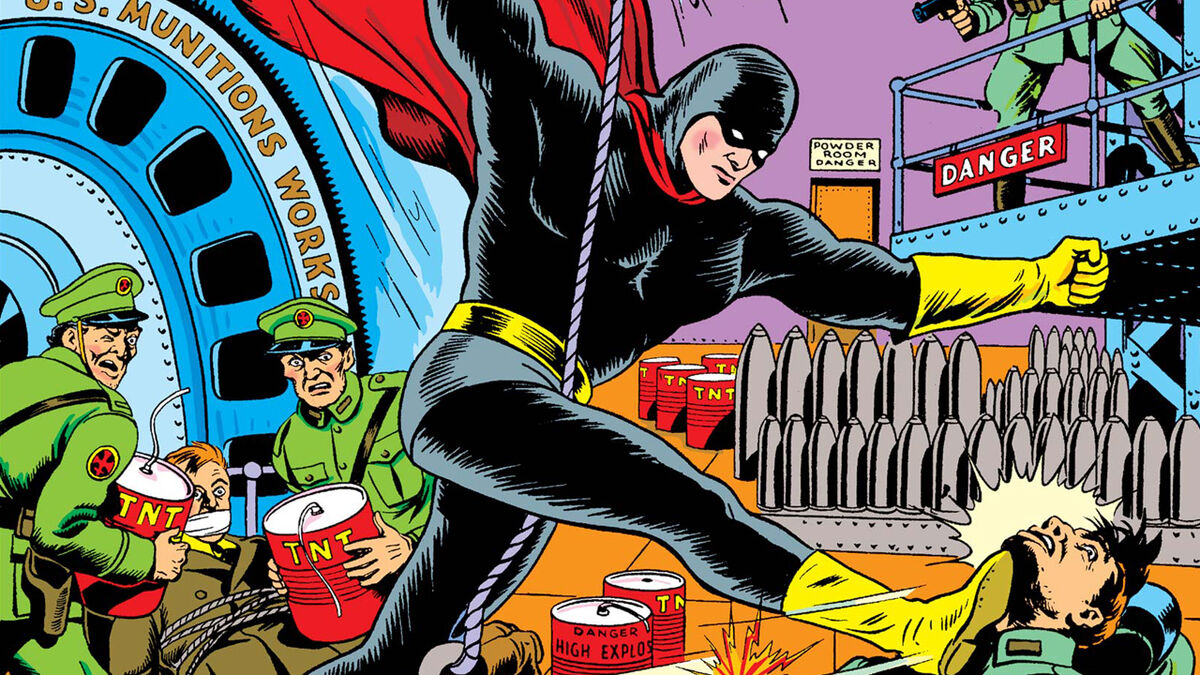
Also debuting in 1940, Daniel Lyons became the Black Marvel in Mystic Comics #5 by passing a series of Native American tests to take on the mantle from the dying Man-To, Chief of the Blackfeet tribe. He starred in that series through issue #9 — with a one-off appearance in All Winners Comics #1 — and then slipped into comic book limbo for decades.
Lyons was dusted off in the 90s in a series called Slingers that established a quartet of new young heroes taking on identities briefly utilized by Spider-Man. As readers learned, the Black Marvel had failed to save a hotel from fire decades ago and had become obsessed with making it right. It weighed so heavily on him that he made a deal with Mephisto to save the reopening hotel from a fire he would set. As deals with the devil go, it did not achieve the desired results.
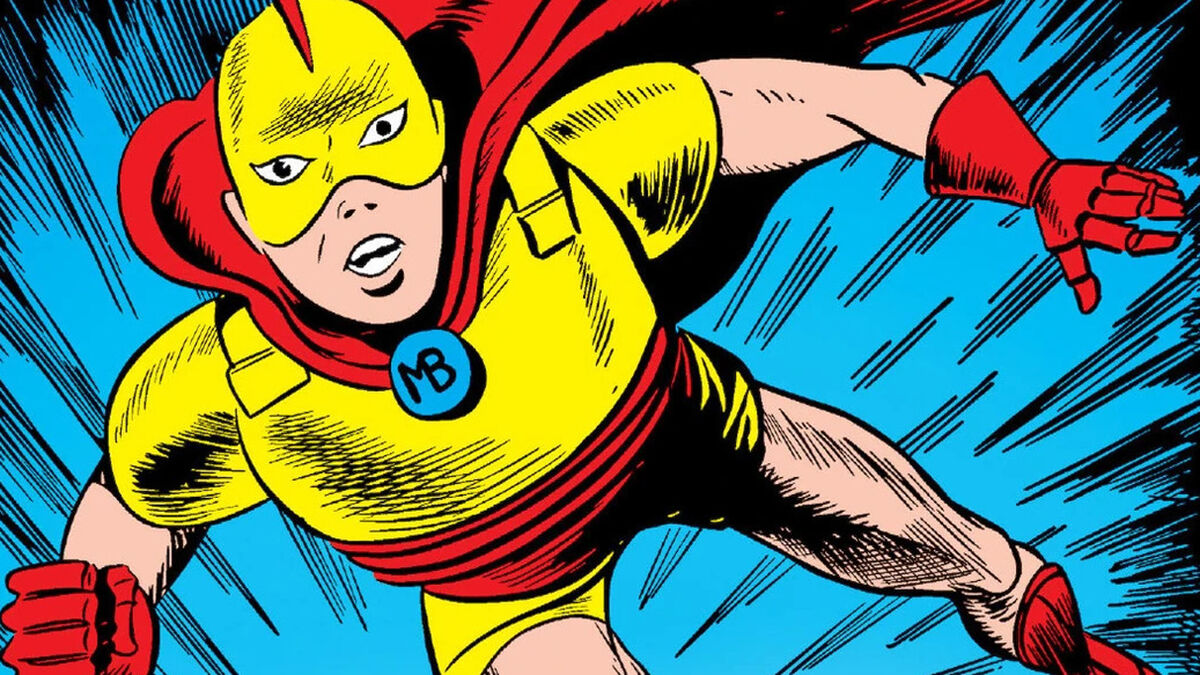
As if dealing with over a dozen Marvels isn’t confusing enough, including several different Marvel Boys, two of them are named Martin Burns AND have a connection to Hercules! Obviously Timely liked the basic idea of their first Marvel Boy but wanted to give it a quick do-over, because in 1942’s U.S.A. Comics #7, Martin Oskner Burns gained powers when the casket of Hercules fell on him during a school field trip at the museum (don’t you hate when that happens?). Some of the demigod’s blood was held inside, and the container broke and came into contact with the boy who then gained the strength of the fabled hero, the speed of Mercury and the wisdom of… Abraham Lincoln!?
This Martin Burns/Marvel Boy also went up against Fifth Columnist spies and, like his predecessor, only made a single appearance. Maybe the two Martin Burns’ met up eventually to compare notes on their brief hero careers and the bizarre connection they have.
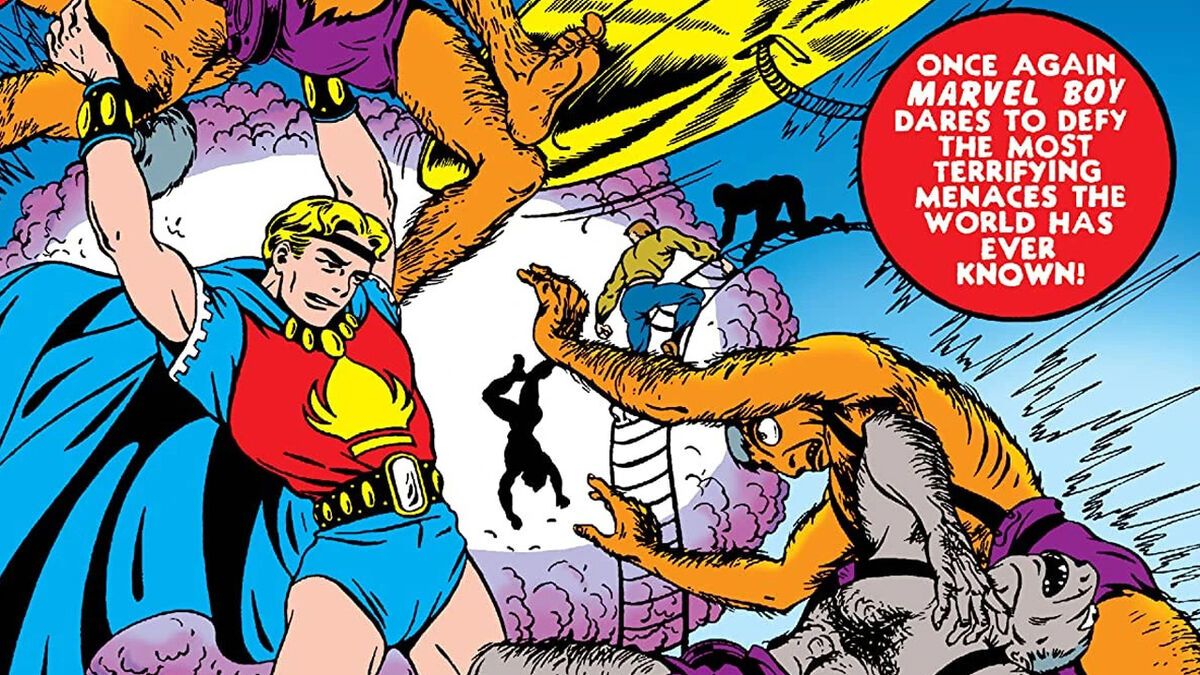
The third Marvel Boy has had a much better track record than the two that came before and was the first – but not the last – of the Marvel-named characters who would directly influence others thanks to his persona. In his initial 1950 outing, Robert Grayson was a kid whose rocket scientist father took him on a journey to space that lead them to Uranus. Raised there, Bob developed powers like telepathy and increased physical strength. His father eventually presented him with a uniform and a spaceship before sending him back to Earth to fight evildoers. He starred in the first two issues of Marvel Boy, which changed to Astonishing with #3, but he was gone after the sixth issue.
And that was it for Marvel Boy for a while. A being called Thelius went nuts and posed as Bob, calling himself the Crusader, but he died from Quantum Band overload. A copy of Thelius created by Thanos later tormented Quasar, the then-current wielder of the Bands (more on him below). Decades later, the actual Bob Grayson eventually got a new lease on life with the launch of Agents of Atlas in 2006 when he was presented as a member of the title team, which had been a secret since the 1950s.
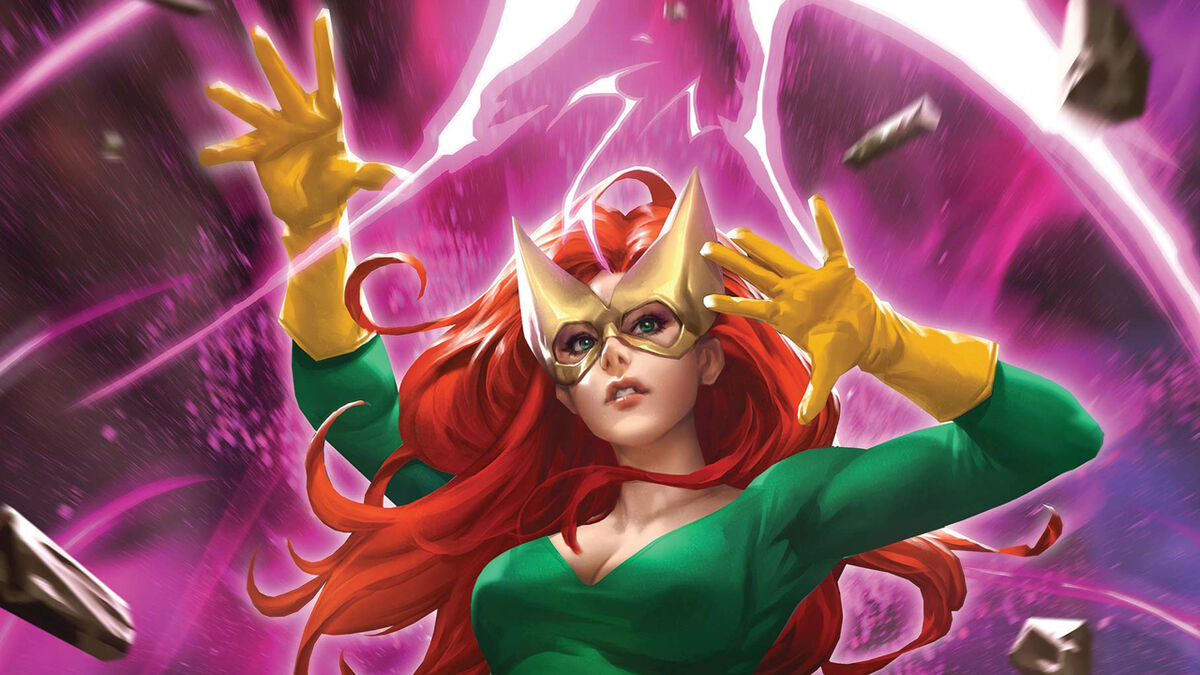
Superheroes fell out of fashion for a while by the 1950s, but the company now known as Marvel rekindled the genre with the launch of Fantastic Four in 1961, followed by a ton of other notable titles, including X-Men in 1963. That original X-Men team included only one female character, Jean Grey, whose original codename was Marvel Girl, making her the first character to have the word Marvel in her name after the company itself became known as Marvel with FF‘s launch. Armed with telepathy and telekinesis, she held her own against the many villains they went up against. The character has also gone on to be in a variety of animated series and is well known to moviegoers thanks to Famke Janssen playing the role in 2000’s X-Men, plus multiple sequels, and then Sophie Turner taking over as a younger Jean beginning with 2016’s X-Men: Apocalypse, though she did not use the Marvel Girl name in any cinematic outing.
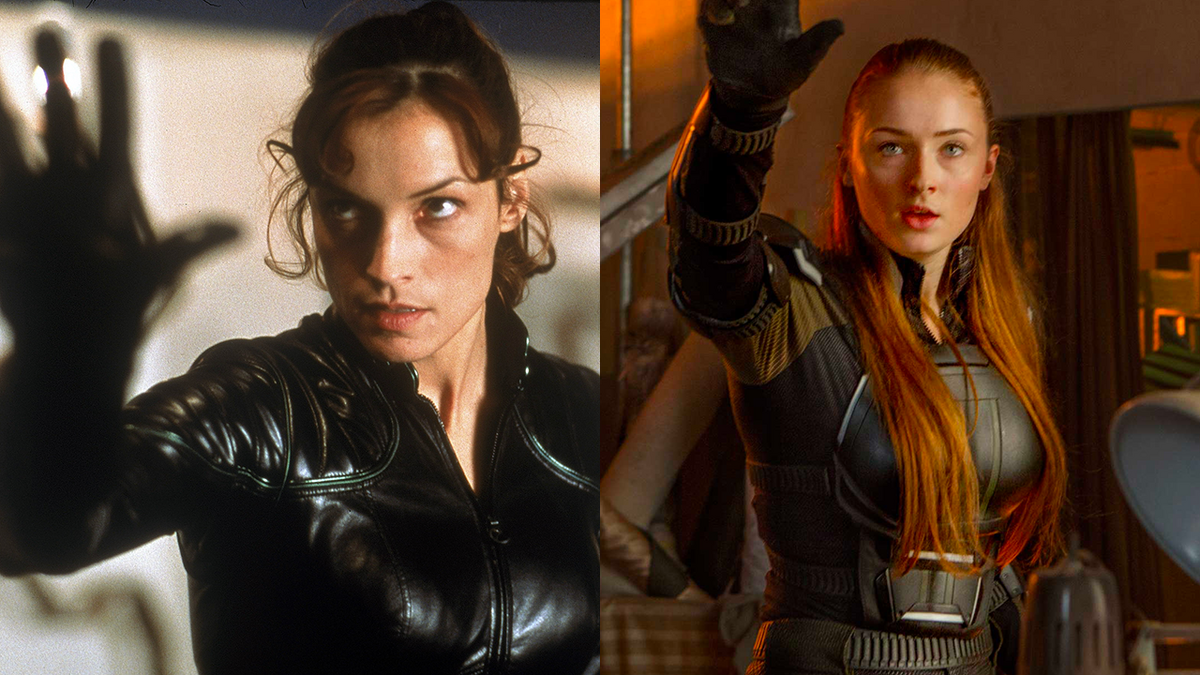
While not keeping the name Marvel Girl the whole time, Grey has gone on to become one of the most significant characters not just amongst the X-Men, but in the entire Marvel Universe. Having joined with the Phoenix Force, she became cosmically important and unbelievably powerful. And, aside from those times when she was dead (it happens…), Grey continues to be a prominent X-Man. With the establishment of the mutant nation of Krakoa, she even went back to calling herself Marvel Girl. Things have gotten intense since, but we’re not going to spoil all the recent Hellfire Gala 2023 shockers.
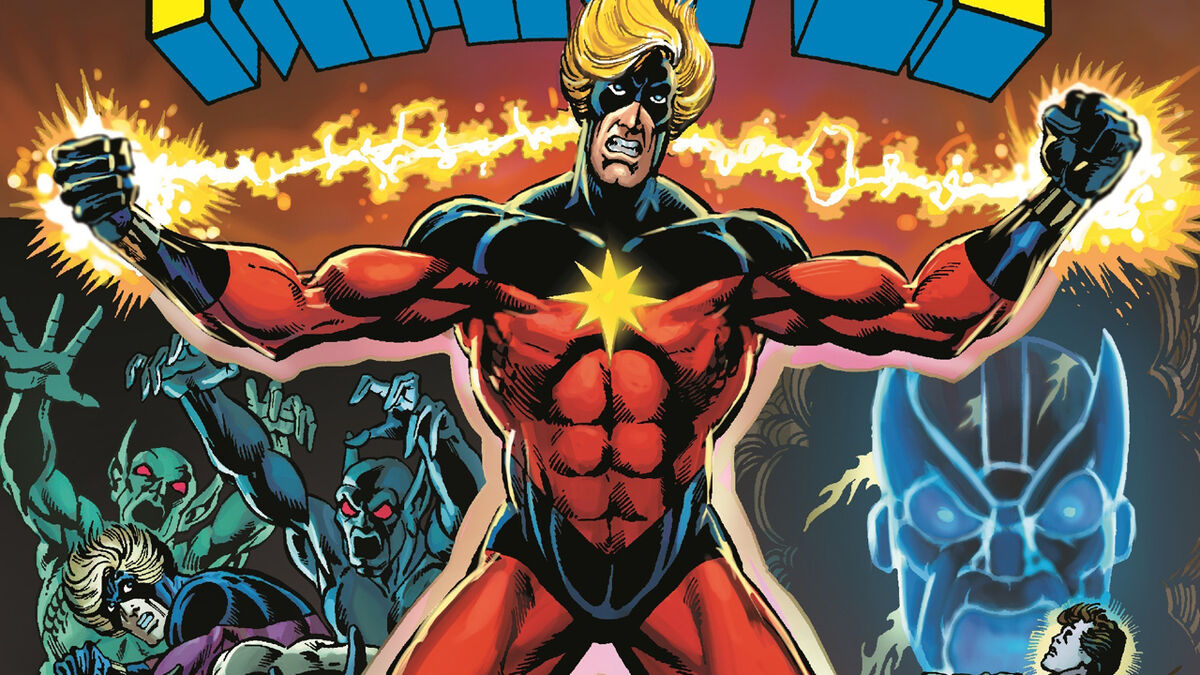
With 1967’s Marvel Super-Heroes #12, the company finally established the most famous name bearing its moniker with the introduction of Captain Marvel – albeit quite awhile after that Shazam guy had been using it over at another company. A warrior of the Kree, the soldier known as Mar-Vell was sent to Earth by his leader, the Supreme Intelligence, as part of a massively complicated plan that the soldier was not privy to. Eventually he became a respected member of Earth’s hero community and even got involved in the Kree-Skrull War along with the Avengers. He soon changed from his original green and white Kree uniform to a red and blue costume that has been emulated many times since and was also awarded the Nega-Bands to up his power.
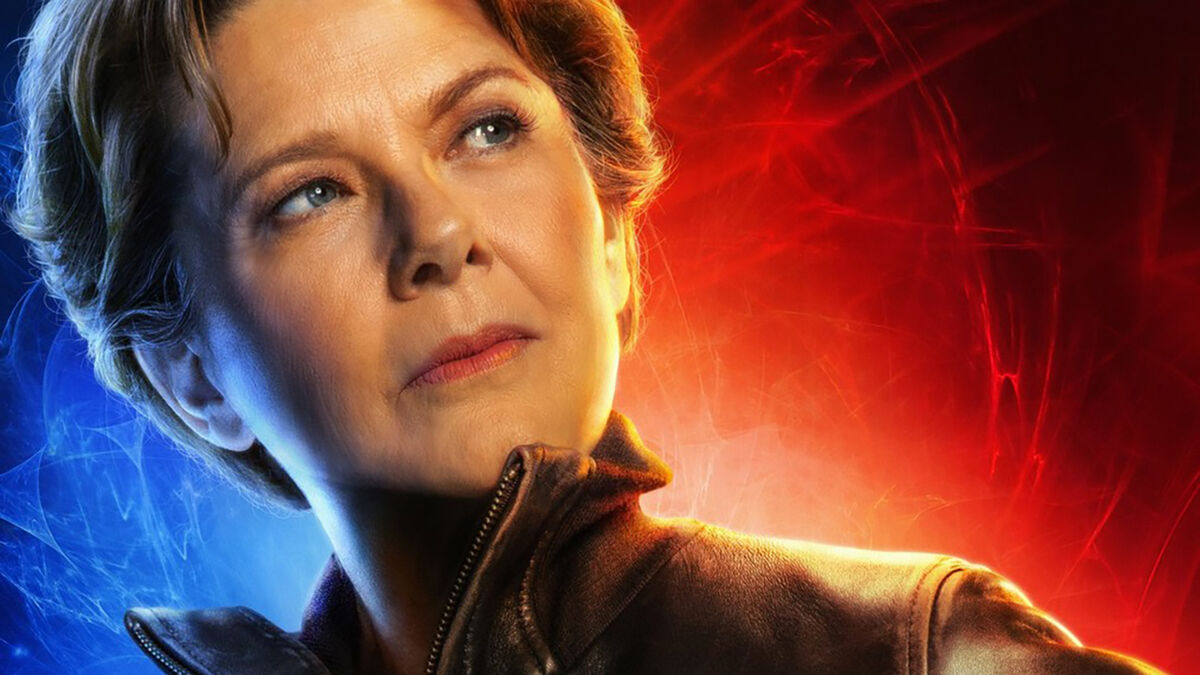
Captain Marvel also helped stop Thanos from taking control of the cosmos, but it would be a much lesser-known villain, Nitro, who would lead to his ultimate undoing. Nitro could explode with massive amounts of radiation and one such attack eventually lead to Mar-Vell getting cancer and passing away in the deeply sad Death of Captain Marvel graphic novel. Up to that point, Mar-Vell hero was the most prominent hero to go by “Marvel” in any capacity in the comics and established the legacy and significance of the Captain Marvel name within the Marvel Universe.
Mar-Vell was introduced into the MCU in the film Captain Marvel, though in a rather different capacity as a Kree scientist, played by Annette Bening, who left her planet to seek a way to find peace between the Kree and Skrulls while working undercover on Earth.
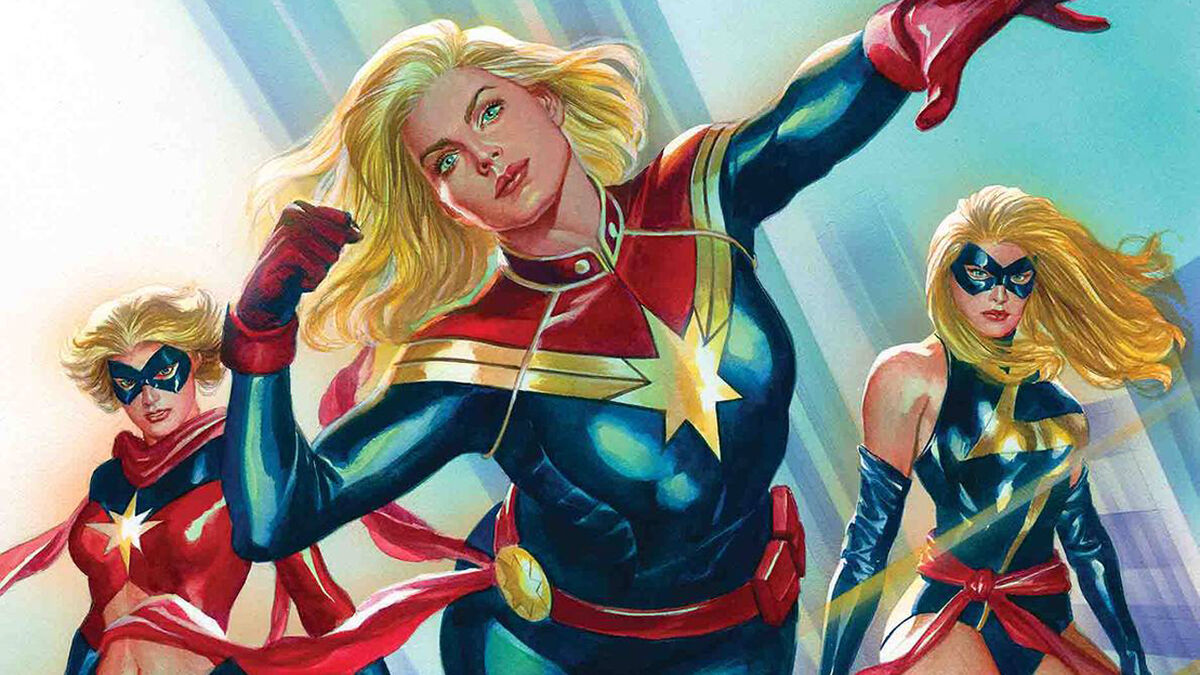
Though Mar-Vell perished, his legacy carries on to this day, most prominently through Carol Danvers, who made her debut just one issue after Mar-Vell did in 1967’s Marvel Super-Heroes #13. While her back story has been expanded since to include more alien origins, a career in the Air Force and some pre-hero adventures, she was head of security at a military facility holding a giant Kree Sentry robot at the time comics readers first met her. Danvers began seeing Mar-Vell in his human alter ego, but eventually came to know the truth about who he was.
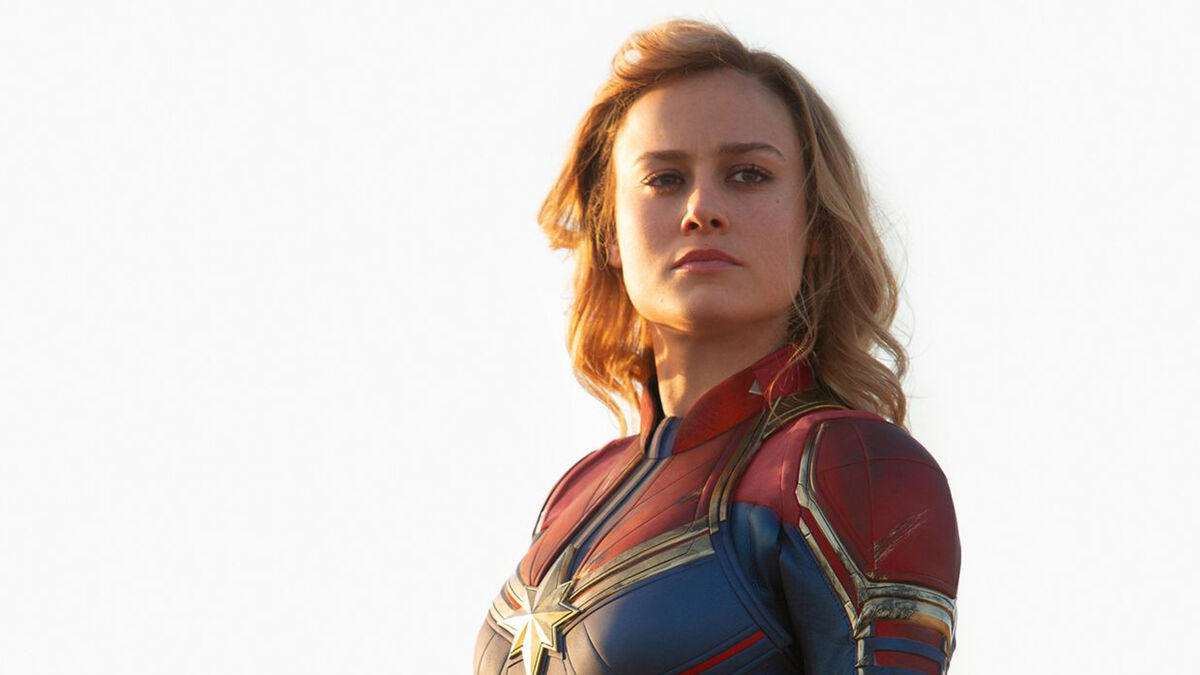
When Carol was exposed to a Kree explosion, it changed her DNA, giving her powers and abilities similar to those of Mar-Vell’s. She soon took the name Ms. Marvel and began starring in her own series which launched in 1977. Over the ensuing years, Danvers would join the Avengers and continued her hero career using different identities like Binary and Warbird before finally becoming Captain Marvel in 2012. Ever since, Carol has flown the colors and made Mar-Vell proud by becoming one of the most stand-up heroes around.
In the MCU, Brie Larson‘s Carol Danvers skipped over going by Ms. Marvel and started right out with the title Captain Marvel. She has since become one of the most powerful heroes in the MCU, helping rescue Iron Man from deep space and playing a role in stopping the time-traveling Thanos in Avengers: Endgame.
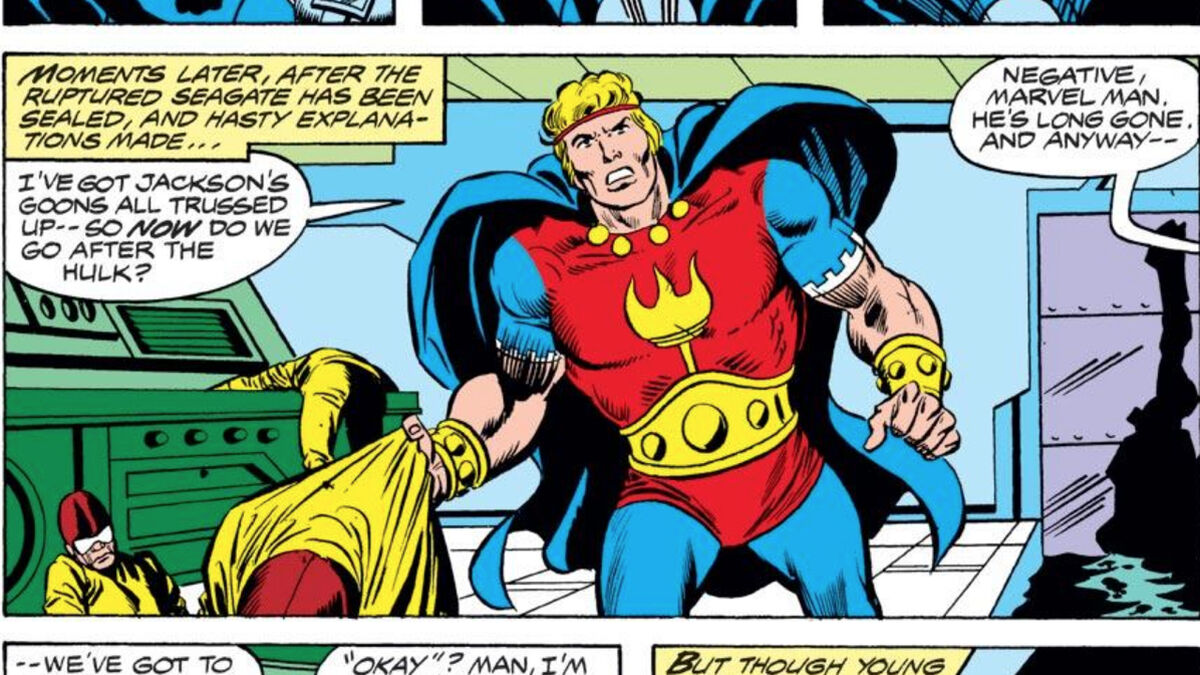
The Quantum Bands that were once held by the fake Bob Grayson/Marvel Boy known as Crusader eventually made their way to one of Tony Stark’s labs for study. To keep them out of enemy hands, a young security guard by the name of Wendell Vaughn put them on and fended them off. All of that happened in advance of his first outing in 1978’s Captain America #217 where S.H.I.E.L.D. set him up to look exactly like the Bob Grayson’s version of Marvel Boy. He only went by Marvel Man for a very short time before switching over to the name Quasar, the title he has since used on any number of galactic adventures, including his time as an Avenger.
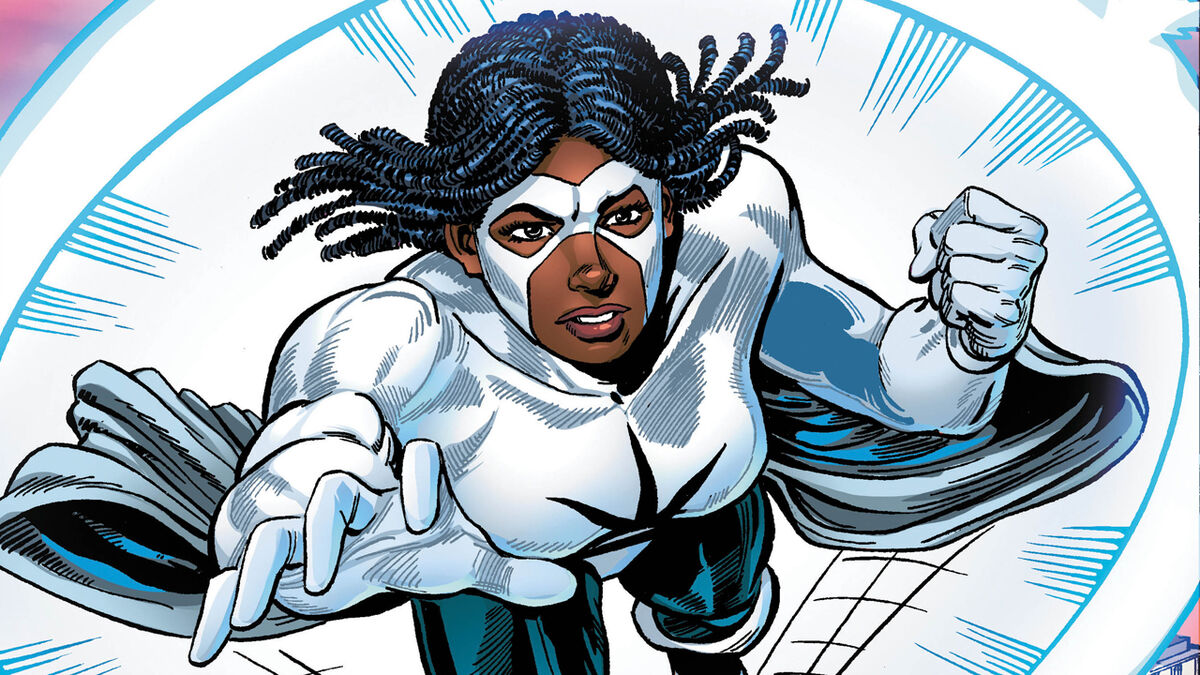
Mar-Vell’s passing was still being felt by the hero community at large when Monica Rambeau became the first successor to the Captain Marvel name in 1982’s Amazing Spider-Man Annual #16. A lieutenant in the New Orleans Harbor Patrol, Rambeau agreed to help a friend of her father’s find his experimental research equipment. When it proved too dangerous, Monica destroyed the machine and was caught in the blast which allowed her to change her body into any kind of energy.
Shortly after her launch, this new Captain Marvel became a member of the Avengers, eventually becoming the team’s chairperson and a proven asset to the hero community. Down the line, she changed her name to Photon after Mar-Vell’s son approached her about carrying on the legacy himself. She has also gone by Pulsar and Spectrum, though these days she’s back to Photon. Rambeau continues to be one of the most powerful heroes around and one the others know they can rely on.
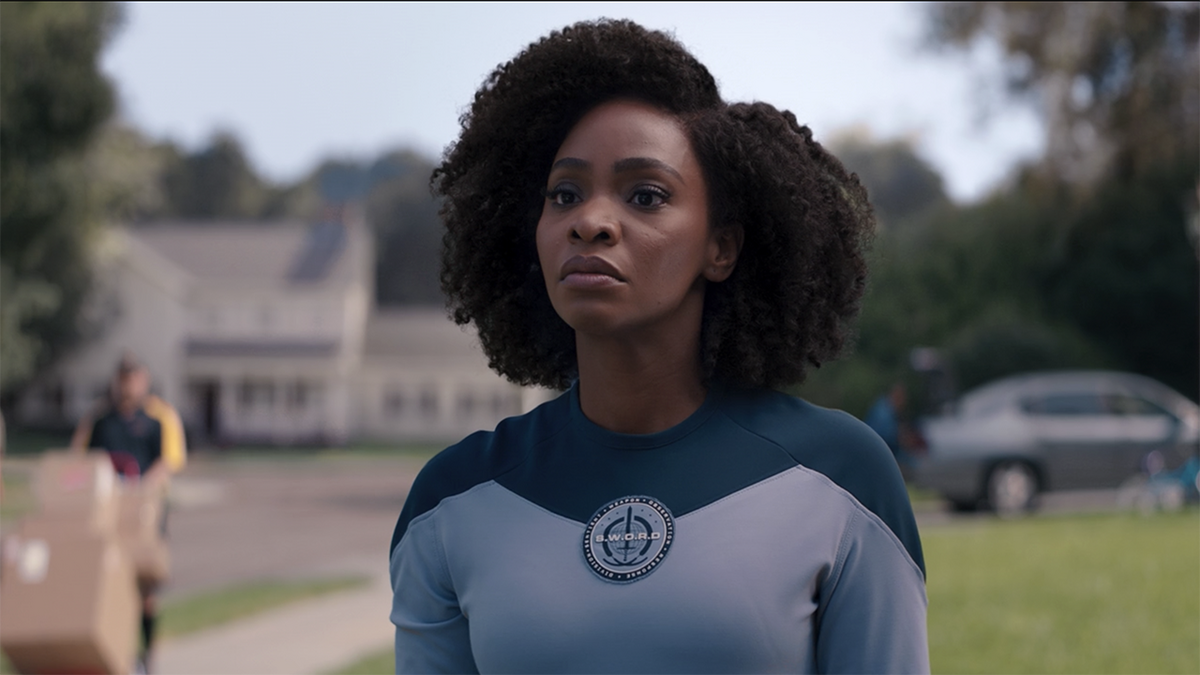
In the MCU, we met Monica as a kid in Captain Marvel and then she showed up as an adult in WandaVision, played by Teyonah Parris, where the S.W.O.R.D. agent gained superpowers during her interactions with the Scarlet Witch. Monica has yet to take a codename in the MCU, though all the merch hyping The Marvels film have dubbed her Photon, so it looks like that will be her onscreen name.
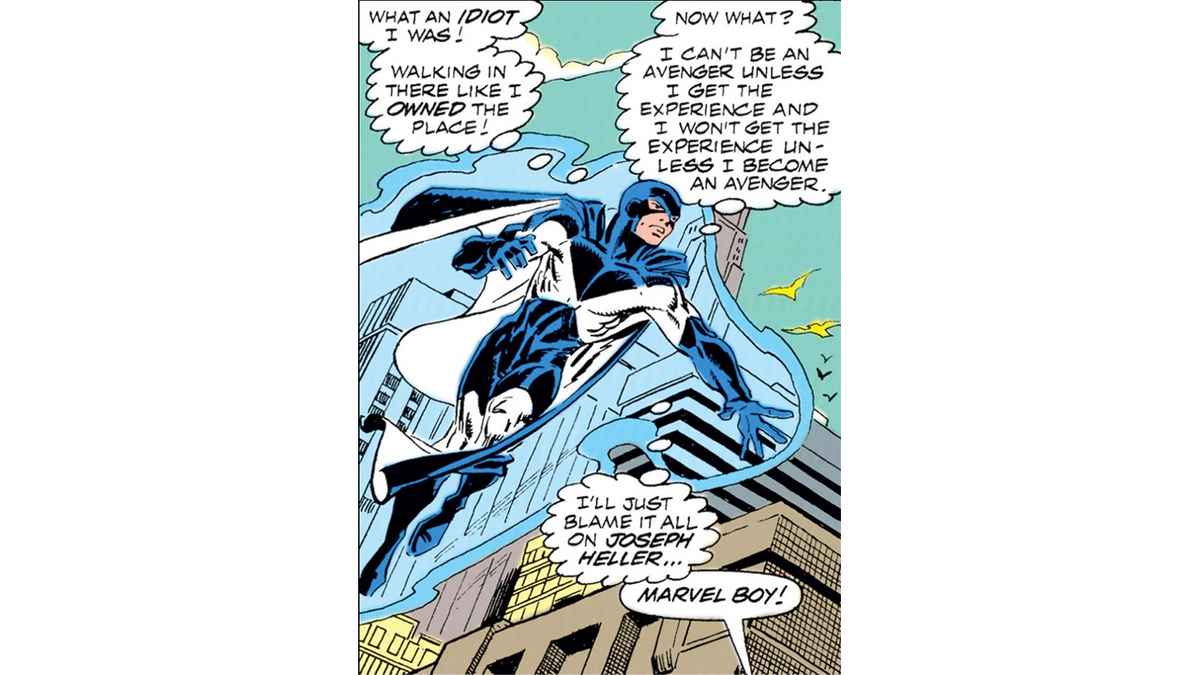
Comics sure can be wild, can’t they? Take Vance Astrovik for instance. When he was a kid, he met a potential future version of himself in Giant-Size Defenders #5, a member of the original Guardians of the Galaxy, and it triggered his mutant telekinetic powers. After running away to join the circus, Astovik took on the name Marvel Boy and co-founded the New Warriors. He went by the moniker for a while until his abusive father attacked him for being a mutant. Trying to defend himself, Vance lost control and tragically killed his father. Astrovik went to jail for his crimes and when he got out, he decided to leave Marvel Boy behind and become Justice, the name he used when he later joined the Avengers.
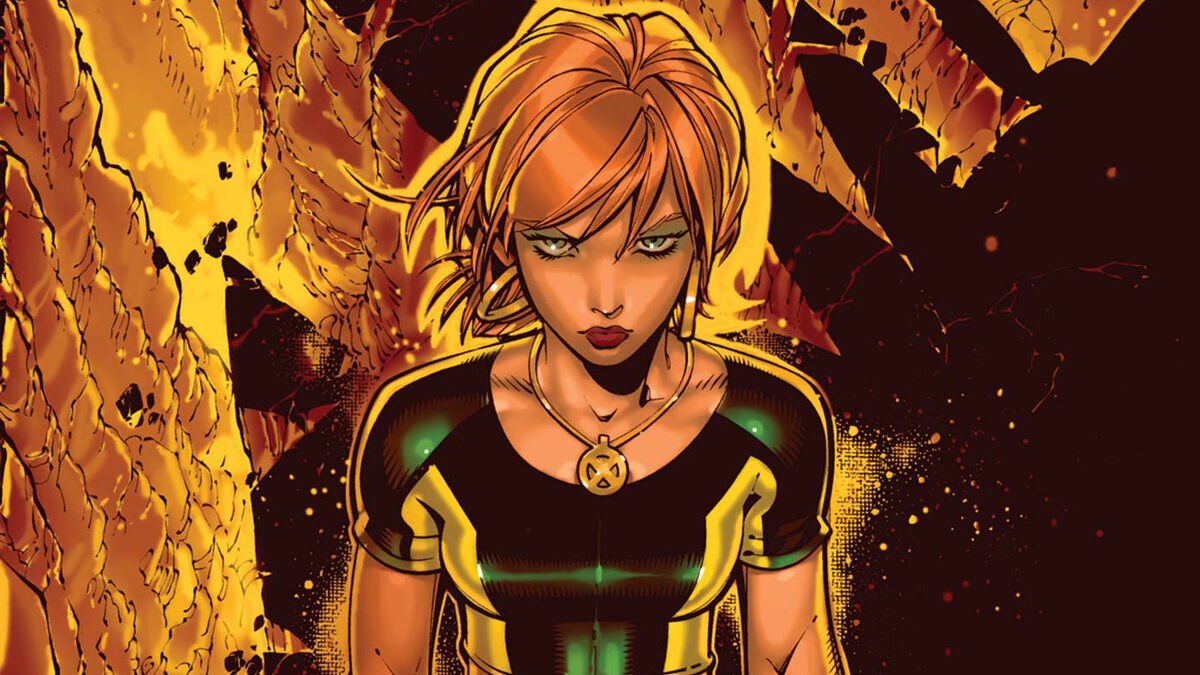
For the most part, we’re not getting into the many alternate reality Marvel-titled characters, but Rachel Summers has spent more than enough time on Earth-616 to deserve an inclusion, having left her own dystopian alternate reality future (Earth-811) long ago. This child of her world’s versions of Jean Grey and Scott Summers exhibited her own telepathic powers and eventually joined up with the 616-universe X-Men and, later, Excalibur, the British mutant squad.
Debuting in 1980’s Uncanny X-Men #141 and also coming to have her own relationship with the Phoenix Force, like her mother, Rachel did not take on the Marvel Girl name until 2001. Around that time, she ditched her Phoenix-inspired costume and went with one more reminiscent of Jean’s from the old days. However, Rachel has been known to switch codenames on the regular and has gone by Askani and Prestige recently.
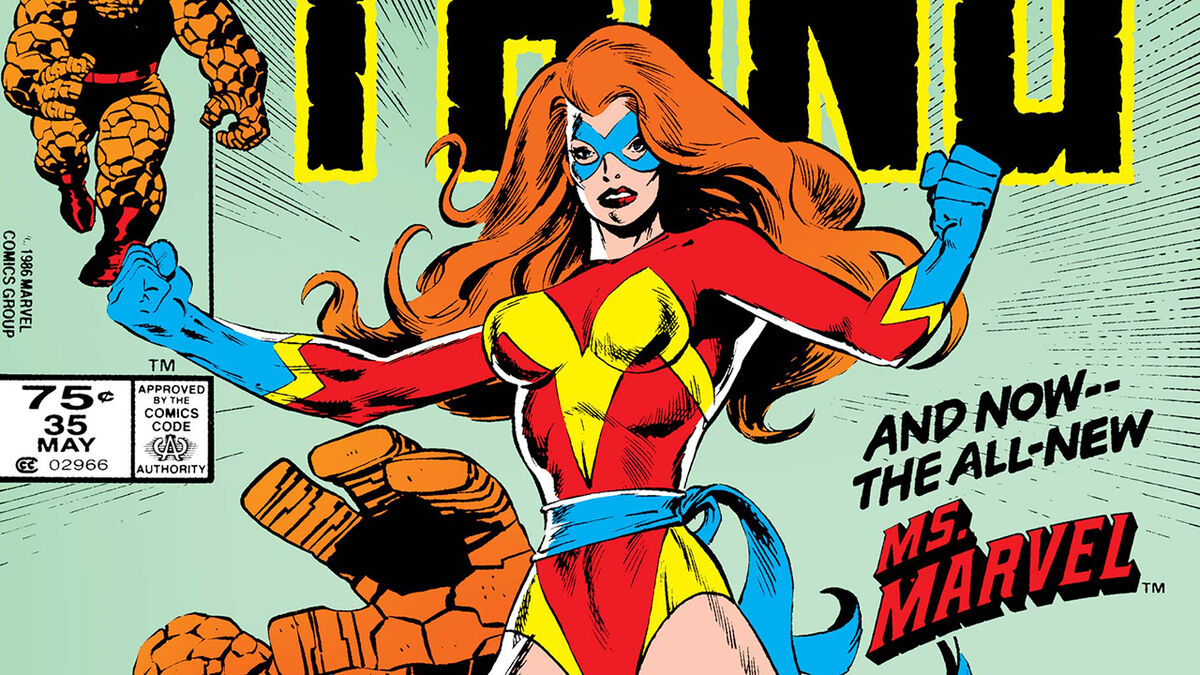
A lesser-known Ms. Marvel made her debut in The Thing #27, but did not actually take the name on until issue #35 of that series. While working as a part of a motorcycle stunt team, Sharon Ventura met Fantastic Four member Ben Grimm during his days as a wrestler and even became a wrestler herself, joining up with a group called the Grapplers. To become a full-fledged member, she underwent a process that gave her enhanced strength and started calling herself Ms. Marvel, wearing a costume partially inspired by Captain Marvel’s second Ms. Marvel uniform. Ultimately, Sharon left the wrestling world when she realized the Grapplers were also a gang of super criminals.
As Ms. Marvel, Sharon joined the Fantastic Four while the Invisible Woman and Mister Fantastic were on a hiatus from the group. Soon after joining the team, during a mission to space, she was exposed to Cosmic Rays that made her look much like The Thing did when he was first was transformed. During this time, she started going by the monicker She-Thing, leaving the Ms. Marvel identity behind.
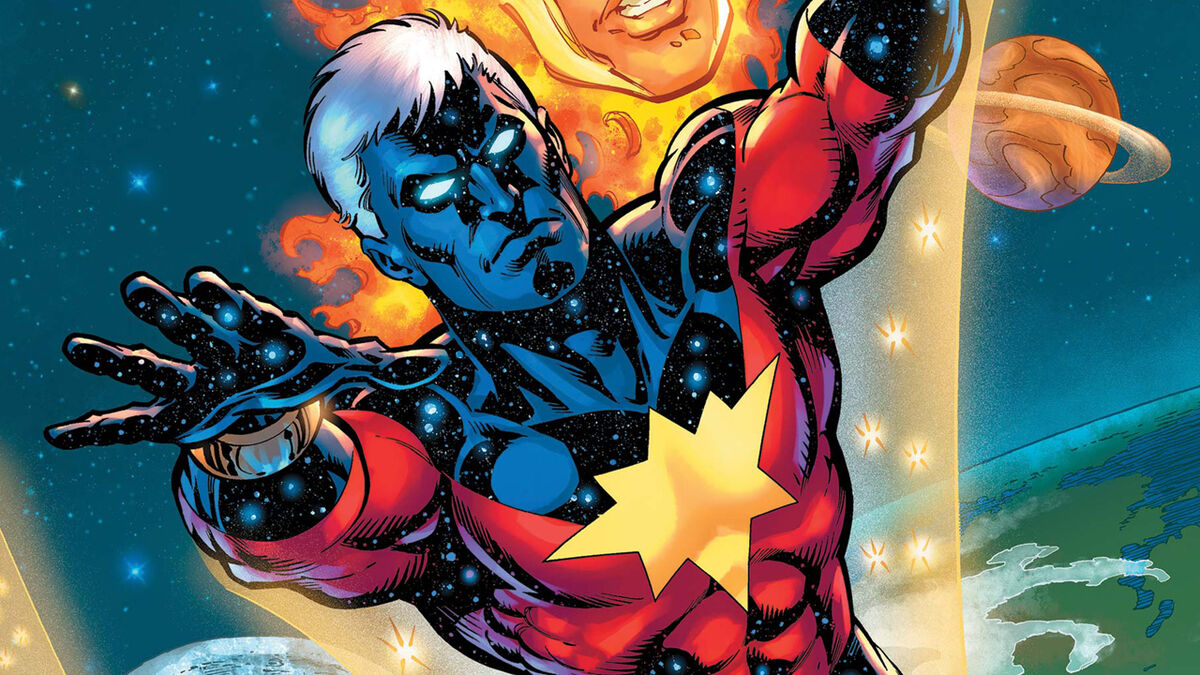
Without ever learning it prior to this death, Mar-Vell had a son by the name of Genis-Vell who was first seen in 1993’s Silver Surfer Annual #6. Father did not know about son because the boy’s mother, Elysius, created the progeny by taking some of Mar-Vell’s DNA and whipping up Genis in a lab. Eventually, Elysius told Genis about his dad and handed the Nega-Bands to him, allowing the son to follow in his parent’s footsteps as Legacy. Genis eventually had a chat with Monica Rambeau that lead to him officially becoming the third Captain Marvel, but his tenure was marred by a bout of insanity during his series. Later, he changed his name to Photon, which lead to yet another awkward conversation with Rambeau. He was cosmically scattered for a time, as happens, but made his return in 2022’s Genis-Vell: Captain Marvel.
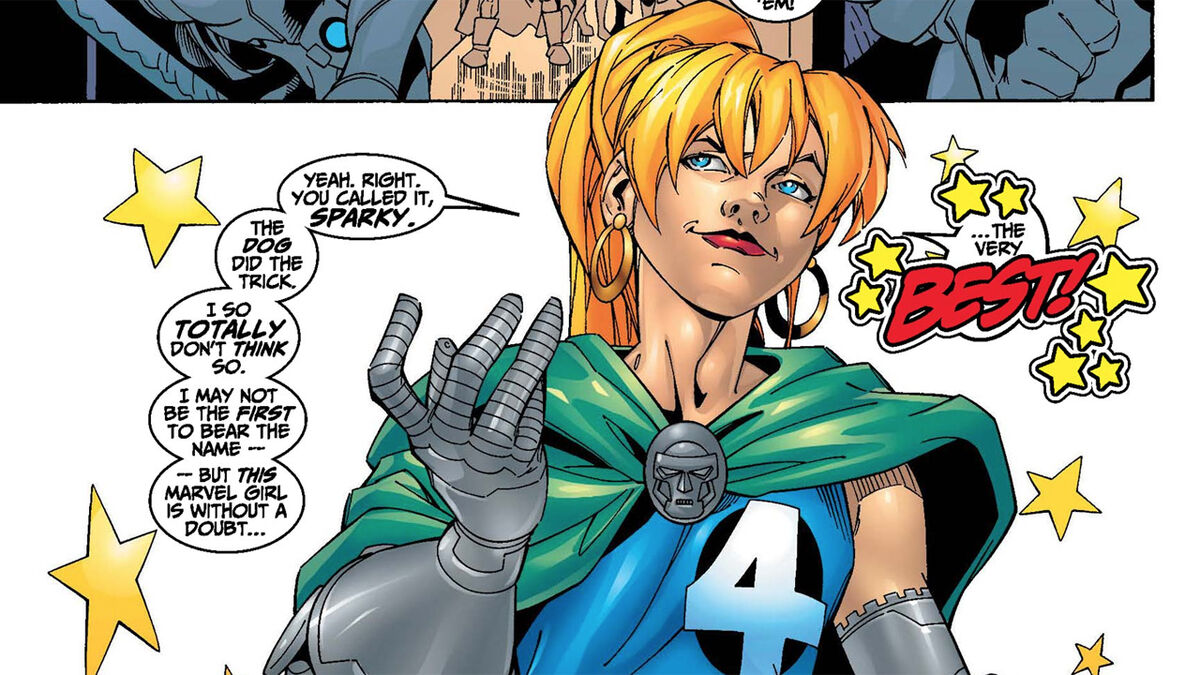
Another denizen of an alternate reality (Earth-99315), this Marvel Girl has a complicated history. Way back in Fantastic Four #267, Sue and Reed Richards received the heartbreaking news that their daughter was stillborn. However, their son, Franklin, in fact saved her and used his reality-warping powers to send her to another reality in which she was raised by a different Sue Storm and her heroic husband, Dr. Doom. She made her first actual appearance in Fantastic Four (Vol. 3) #15 from 1999.
Valeria von Doom possessed her own reality-altering abilities which allowed her to travel to Earth-616. As the heir of Doom, she was also outfitted with her own armor which she used on missions with the Earth-616 Fantastic Four until Franklin used up his powers, which undid her whole life, reverting her to a fetus inside Sue Storm who would eventually be born as Valeria Richards.
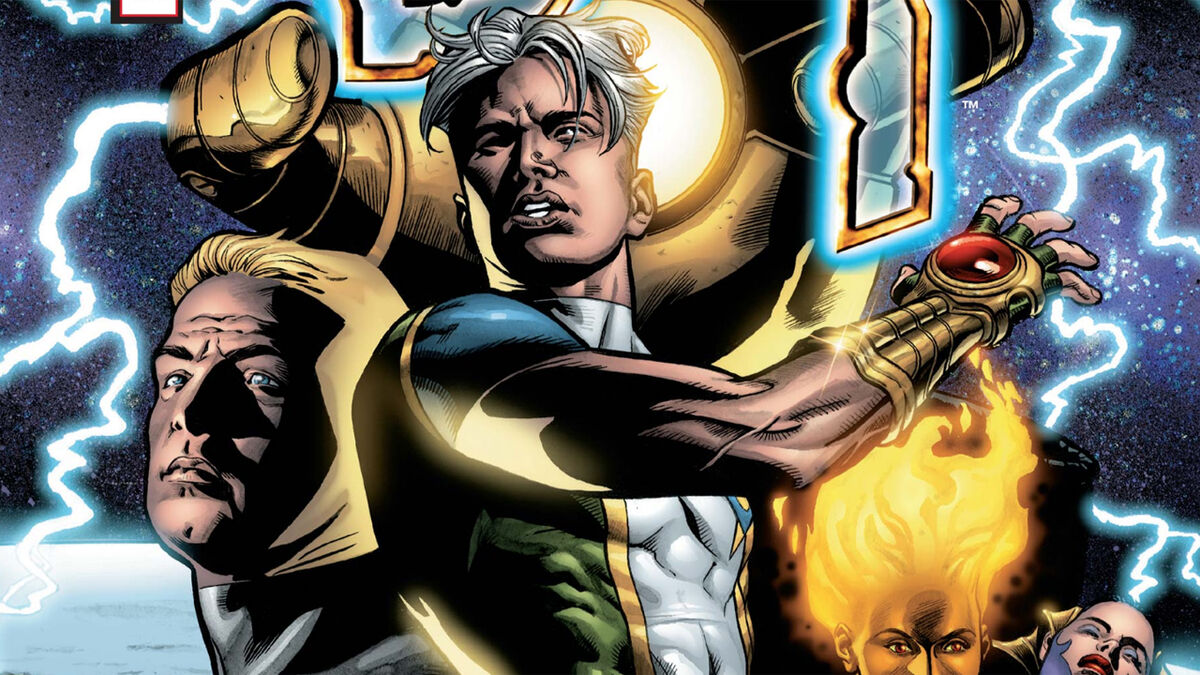
In 2000, readers found themselves faced with a new character in the pages of Marvel Boy, a limited series starring Noh-Varr from Earth-200080. A Kree super soldier serving on a spacecraft called, wait for it, the Marvel, he found himself shunted to Earth-616 where the rest of his unit was killed at the hand of Dr. Midas. While seeking revenge, Noh-Varr wound up arrested and placed in the super prison known as the Cube. He remained there until the Civil War storyline, when he managed to take the facility over and later played a part in the Secret Invasion crisis before taking on the name Captain Marvel for a time as part of Norman Osborn’s Avengers. He eventually left that darker life behind and became a Young Avenger, going back to his Marvel Boy identity.
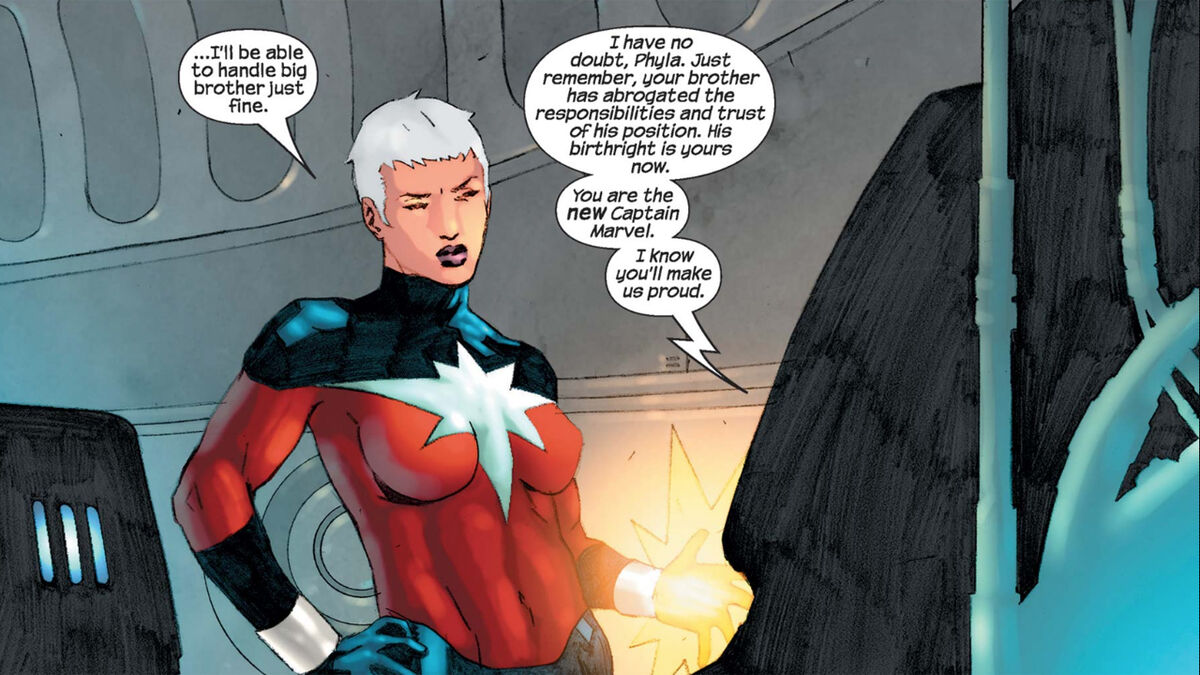
Remember that bit of insanity that Genis-Vell went through? Well, during that time, he destroyed and recreated all of reality. In all of that timey-wimey-ness, Genis’ mom created another child, Phyla-Vell, who we first met in 2003’s Captain Marvel #16. During one of her brother’s episodes, Elysius shifted the Captain Marvel name to Phyla. She did not keep it for long though, going by her own name as well as Martyr during her time with the Guardians of the Galaxy. Phyla was eventually killed by Thanos, though this being comics, she has been seen since battling in the afterlife (albeit in Hell) and could always return again given the right circumstances.
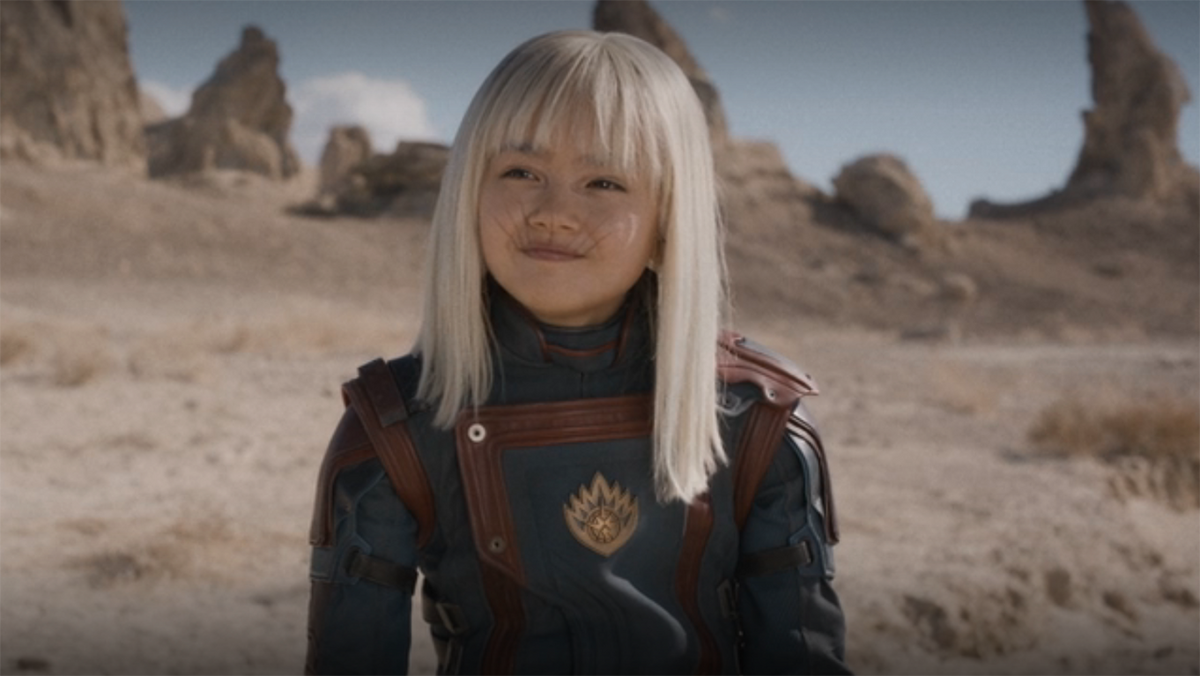
On the movie front, in Guardians of the Galaxy Vol. 3, MCU viewers met the High Evolutionary-designed Star Children. By the end of that flick, one of those kids, Phyla (played by Kai Zen), had become a member of the Guardians.
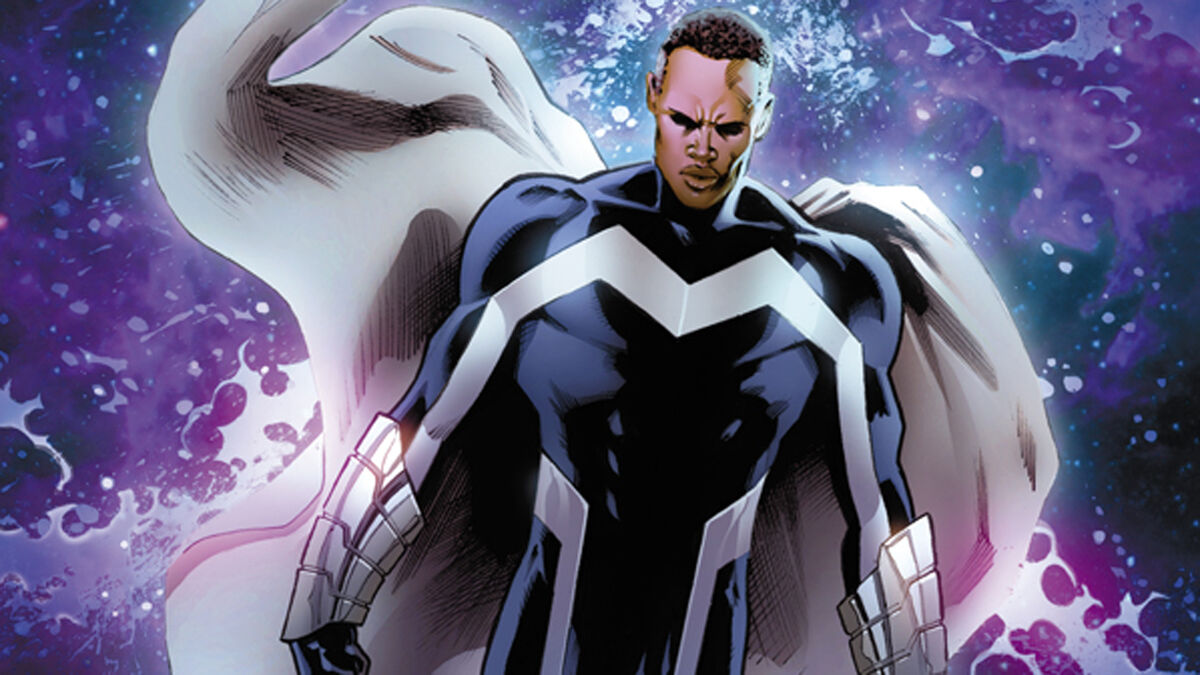
In 2008, the series Adam: Legend of the Blue Marvel laid out the long, sad history of a forgotten hero, Adam Brashear. Already a genius, Adam received incredible powers from anti-matter during an experiment gone wrong. He became the Blue Marvel, but overt racism lead him to give up the identity. However, in the modern era, he went back on that and has since become a prominent member of the Avengers and the Ultimates, a group that also included both Carol Danvers and Monica Rambeau. Even more recently, he became a leader of sorts to a new group of Defenders.
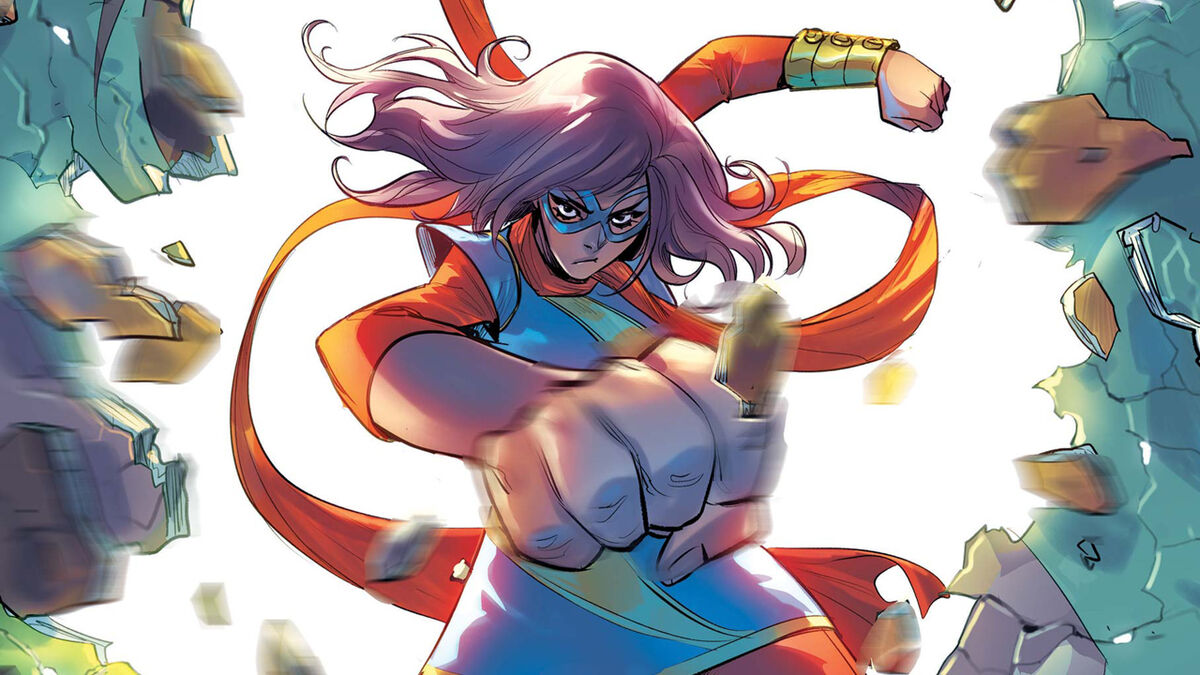
You’d be hard pressed to think of a character created in the past decade to have quite the impact that Kamala Khan has had as Ms. Marvel. This teen Inhuman developed powers allowing her to control the size and shape of her body. With these newfound powers, Kamala took on the name of Ms. Marvel to honor her favorite hero, Carol Danvers, AKA Captain Marvel. The two met and Danvers was impressed with Khan’s spirit and abilities. As she developed as a hero, the community took notice and she even became both a Champion and an Avenger.
This year has been a busy one for Kamala in the comics, where she was killed by a villain called Emissary in Amazing Spider-Man #26. But readers did not have long to mourn, as the character was even more recently brought back to life by the mutants of Krakoa, because — in what was a big surprise to Kamala — she just so happens to be a unique Inhuman-Mutant hybrid, as seen in X-Men: Hellfire Gala 2023. Ms. Marvel has since joined the X-Men.
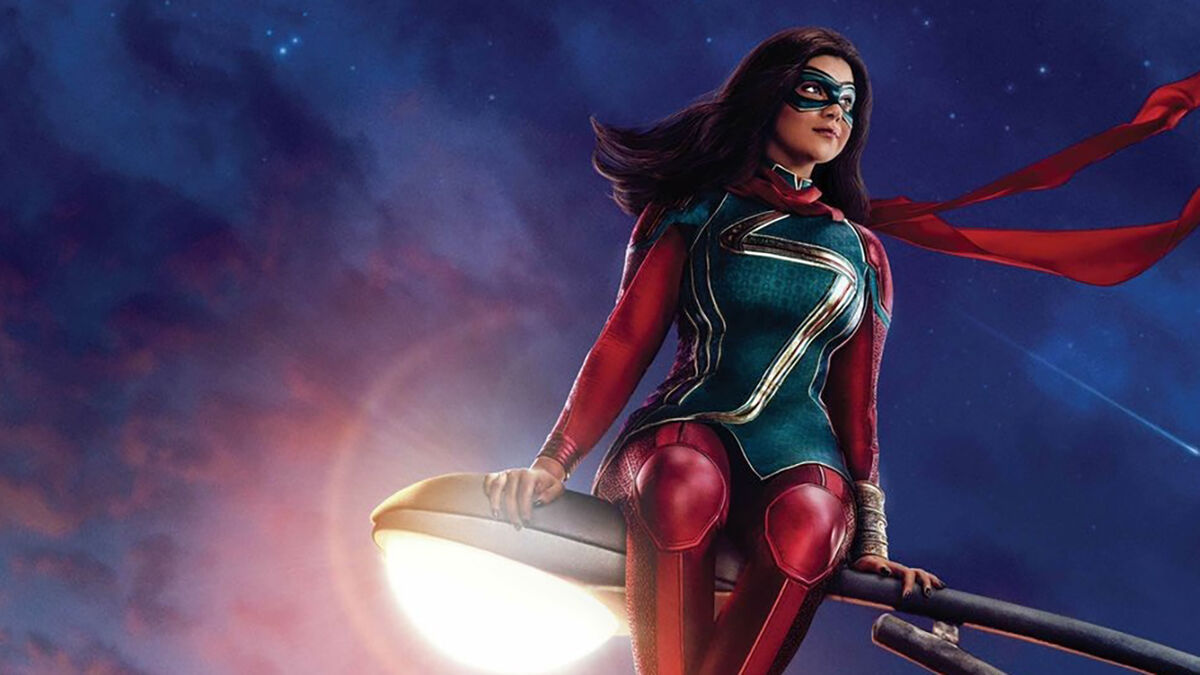
In live-action, the character went on to star in the Disney+ Ms. Marvel series, where Iman Vellani‘s winning performance delighted many. At the end of the first season, Kamala learned that she was actually a mutant, the first ever mentioned in the entire MCU, which seems to have now influenced the character’s change in the comics. Moving forward, it will be interesting to see how the characters in The Marvels continue to grow and reflect the legacy of Marvels from the source material.
The Marvels opens November 10.
Related New
Related